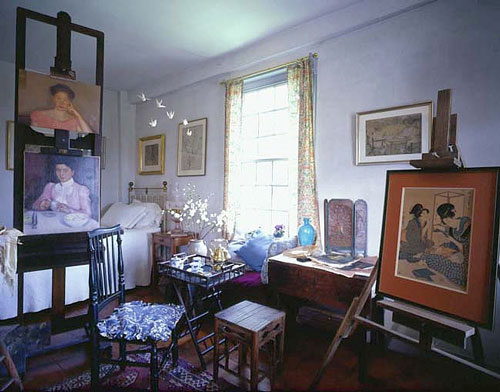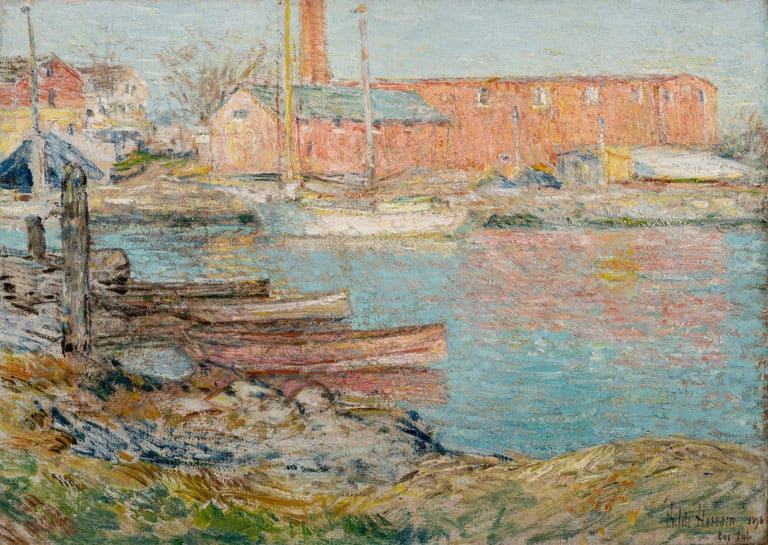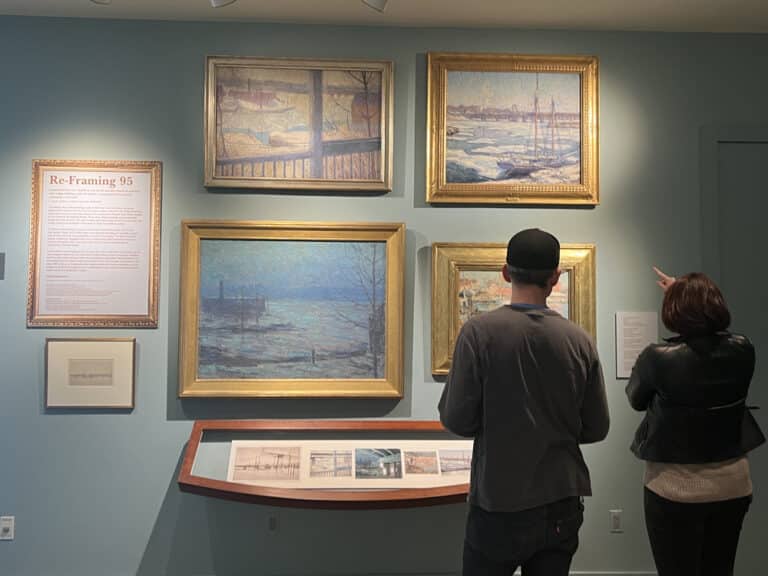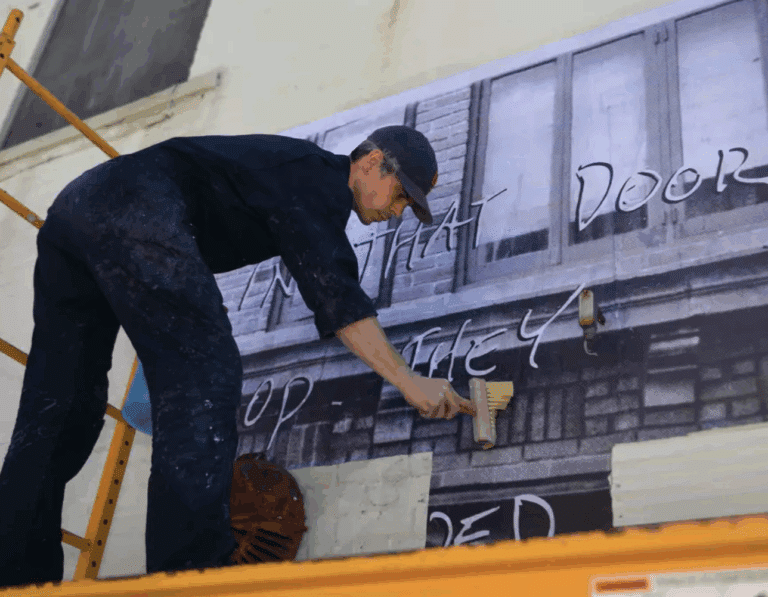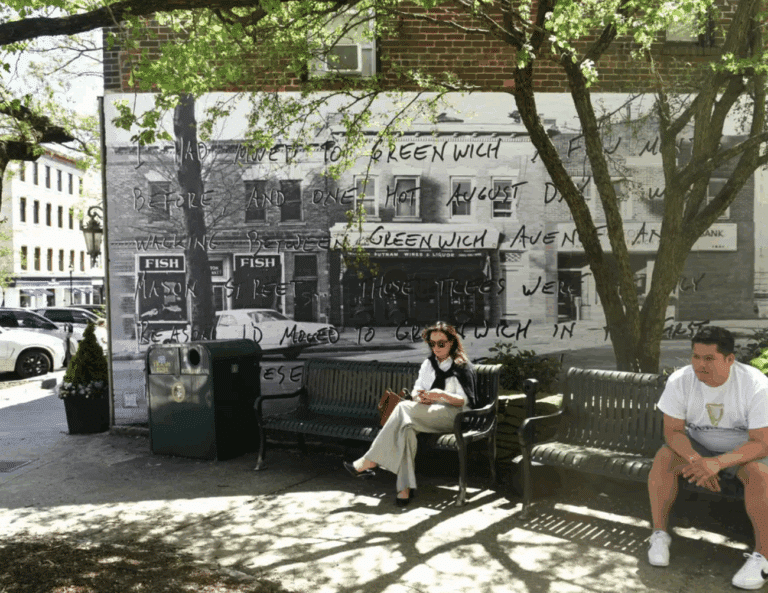Elmer Livingstone MacRae was born in New York City on July 16, 1875. He was living in New York City when he started taking classes from John Twachtman at the Holley House. MacRae may have had a studio in the Holley House as early as 1899, the year he moved into the house, one year before his marriage to Constant Holley. His studio reflects his interest in Japanese art and his ability to find artistic inspiration from his immediate surroundings. Like many Impressionist artists, MacRae was intrigued by Japanese art for its non-Western subject matter and perspective. Origami cranes hang from a wire strung between the easel and the window, and a Japanese woodblock print sits on a small easel.
“This afternoon I did a large pastel of Cos Cob, standing under the Annex looking out towards the post office. I got the postmaster, Miller, three children, brown dog and Mrs. Ferris’s carriage in the sketch.”
Elmer MacRae
The predominant theme of MacRae’s artwork in the studio is his wife, Emma Constant MacRae,whose portraits adorn almost every wall in addition to the two on the easel. As well as providing inspiration, the house served as the perfect setting for the display of MacRae’s work. He held widely publicized and critically acclaimed exhibitions in the house from 1908 to 1911.
Japonism was popular in American society by the end of the nineteenth century, following the opening of Japanese trade routes to the West. Americans were fascinated by the different traditions maintained in the East, which they often characterized as exotic.
Elmer MacRae’s floral studies showcase blossoms presented with techniques popular in Japan; the compositions are asymmetrical, part of the image is cropped, and the brushwork reflects conscious study of traditional ink and brush techniques. MacRae learned many of these skills from Genjiro Yeto, a Japanese artist who frequented the art colony.
Elmer MacRae used his considerable organizational skills to help plan and implement an International Exhibition of Modern Art at New York City’s 69th Street Armory in 1913. This show changed the direction of American art, showcasing works of art by European artists such as Marcel Duchamp and Paul Cezanne, which looked radically different from realist and impressionist artwork.
Gayhead, completed by MacRae in 1915, exhibits the changes occurring in the art world following the Armory Show. The cliffs in this painting, expressed in agitated lines, are in vivid reds, blues, greens and yellows, which shows movement away from impressionism and toward modernism.
The Armory Show, in addition to numerous other factors, such as disturbances created by World War I and the death of many influential members of the art colony, caused the decline of the Holley House in the 1920s.
